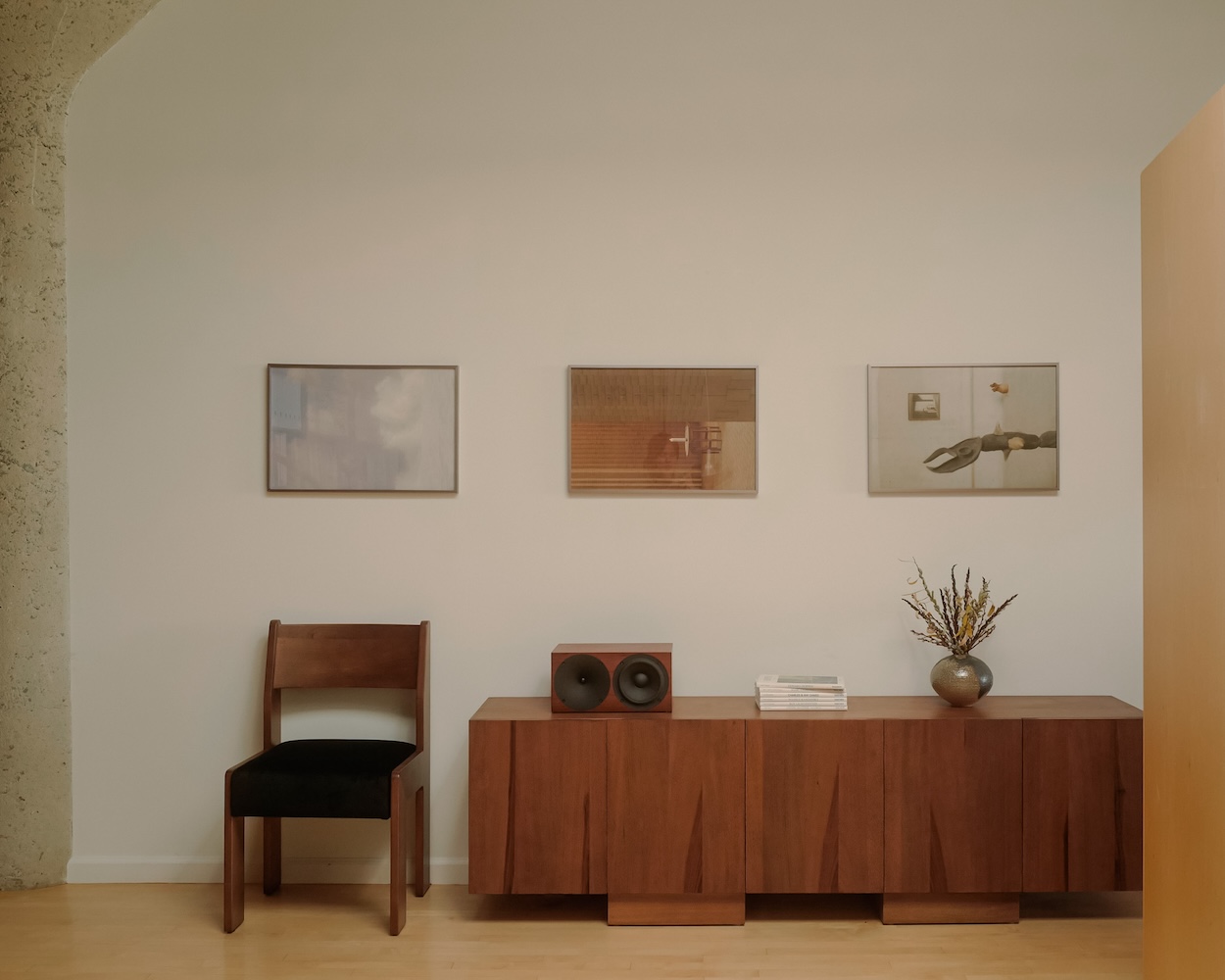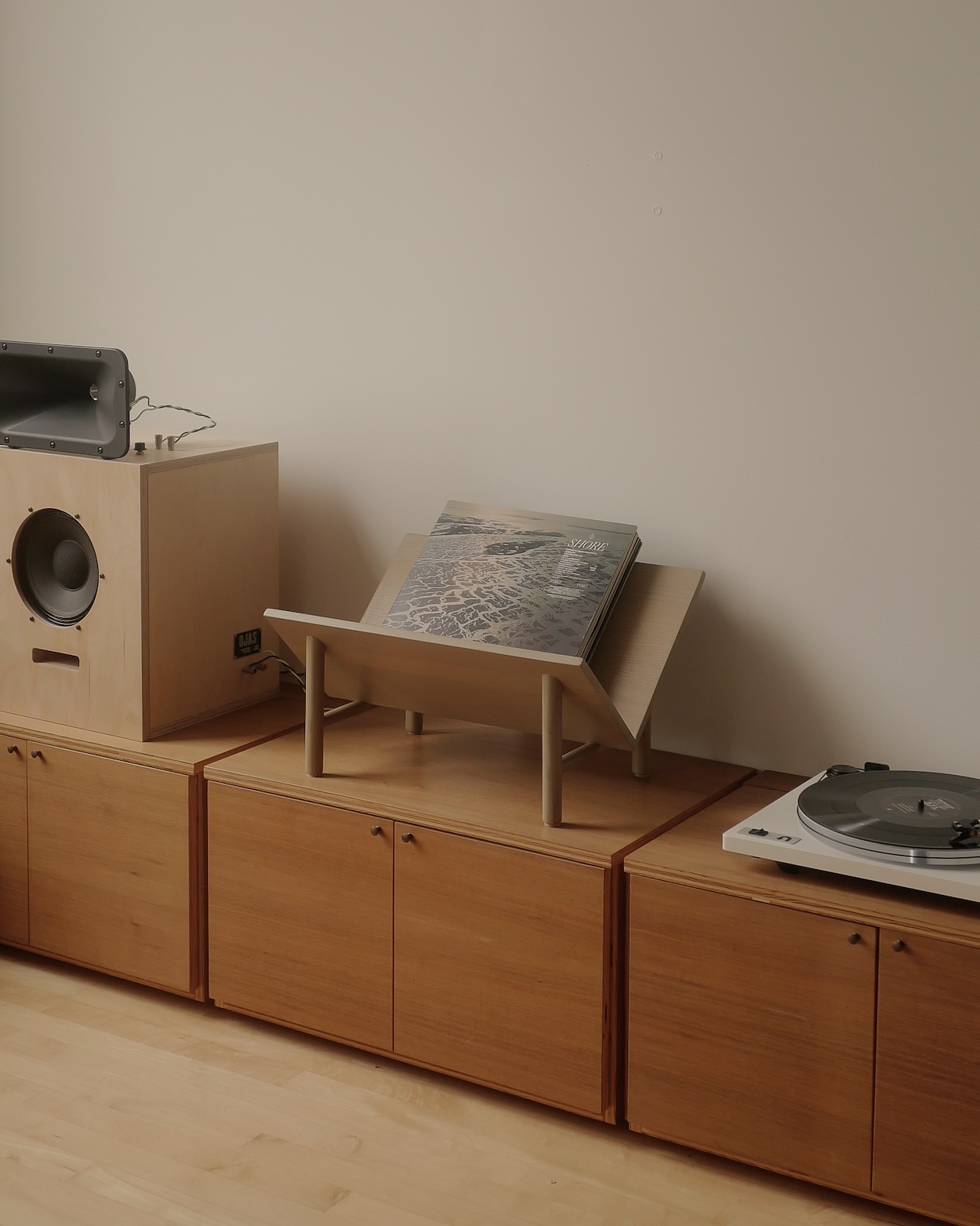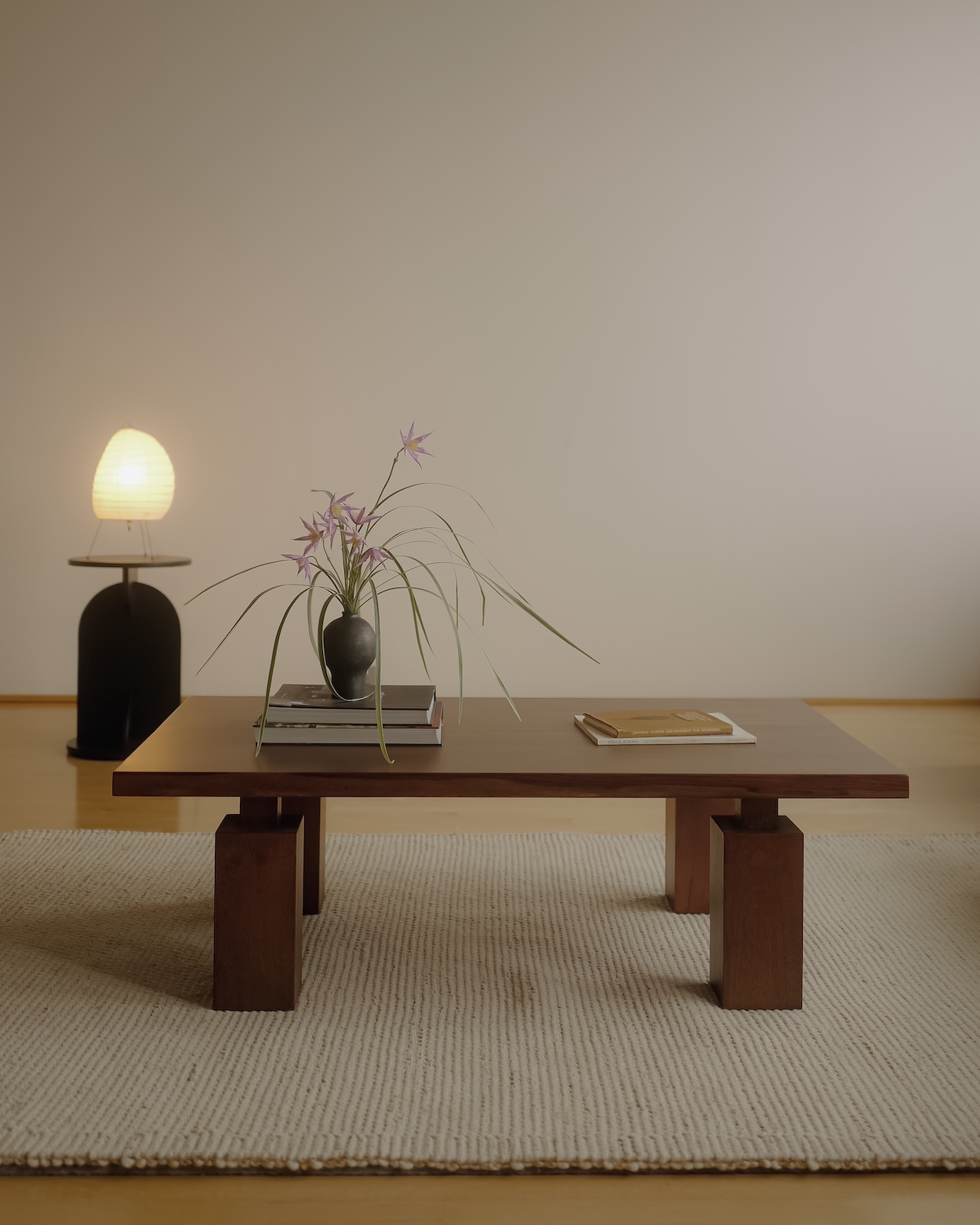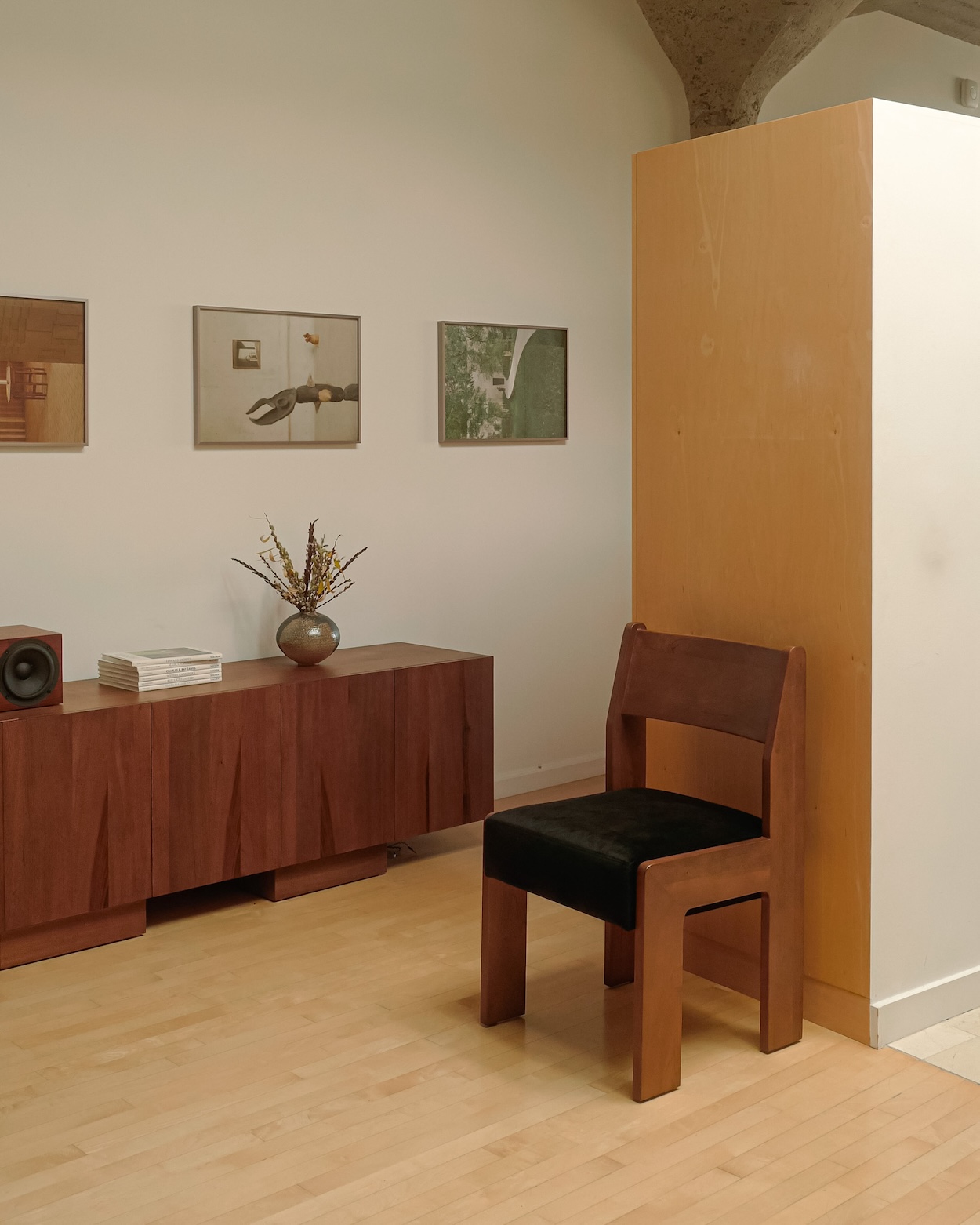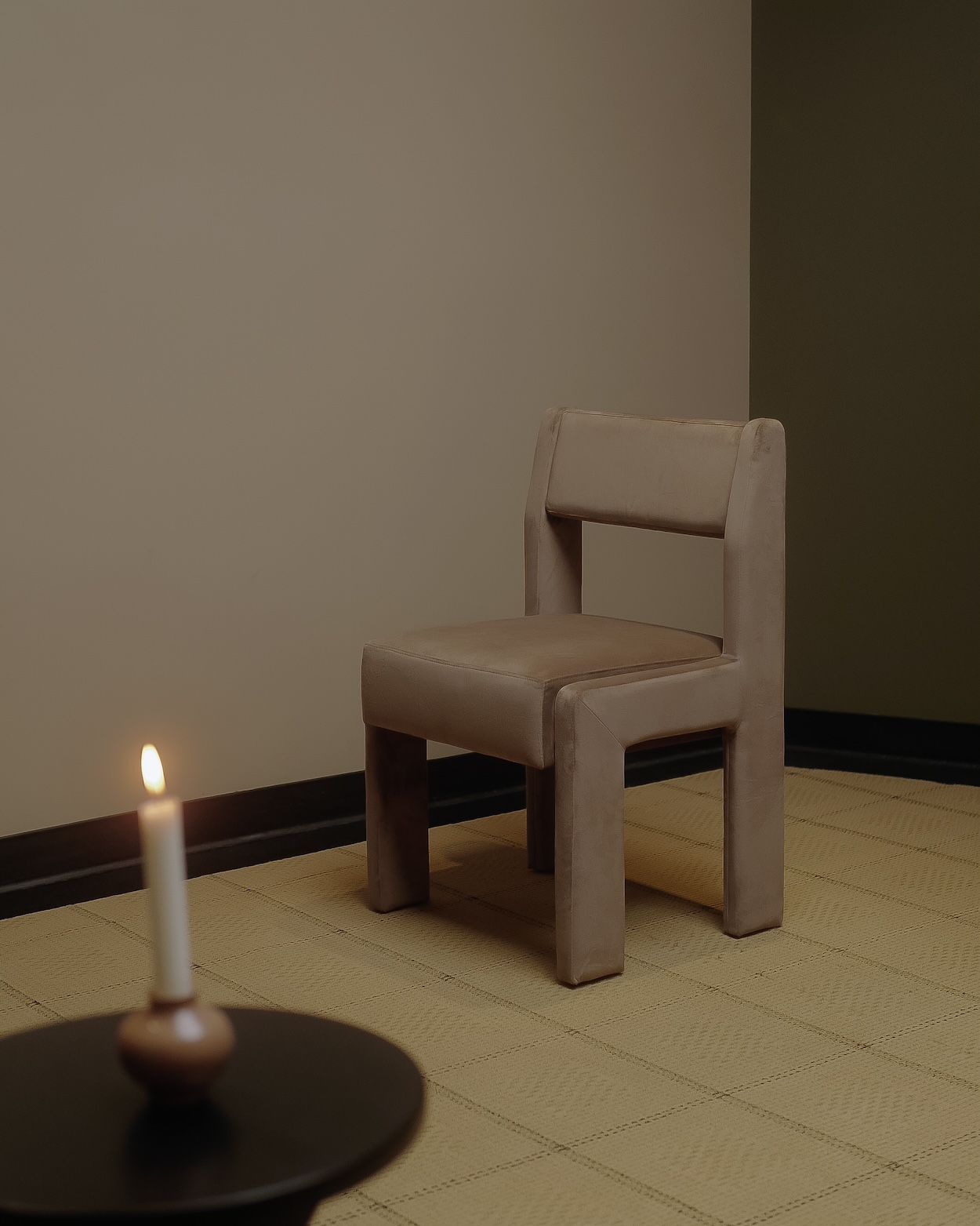Here, we ask designers to take a selfie and give us an inside look at their life.
Age: 33
Occupation: Creative director and founder of Sun at Six.
Instagram: @sunatsix
Hometown: Santa Cruz, CA
Studio location: Brooklyn and San Jose, CA.
Describe what you make: It’s all furniture, for now at least. We’re a small furniture studio and specialize in traditional joinery, which is a set of techniques for putting wood together without nails or screws. You can actually do it without glue as well, so it’s just wood holding itself together using complex interlocking joints. Because we do commercial work like restaurants and hotels, we use glue for additional strength: there’s always a guy who walks into the coffee shop and decides to hurl a chair. Specifically, we specialize in a form of traditional Chinese joinery, which I learned from my mom, who’s also a furniture designer. She learned almost 40 years ago from a master in Beijing before she immigrated to the U.S.
The most important thing you’ve designed to date: I’m not really a self-important kind of guy and don’t really prefer to think of myself or our work in those terms. We’ve had several designs that are pretty widespread and have many imitations, like the Temi Chair. Our Kiral Bed’s really popular. But probably the most important work we do is around pushing norms in sustainability in the furniture industry. Many consumers and retailers have limited insight into wood forest management, supply chain, and the nitty gritty that goes into determining if certain materials or techniques are sustainable. We used to do lacquer—really beautiful traditional work, with up to 100 layers for a single piece. It was painstaking and beautiful, but because certain processes weren’t healthy for our employees, we stopped even though there was tons of demand.
We see it as our responsibility to push certain materials or techniques even if retailers tell us “hey, our customers only know white oak and black walnut, so that’s what we want.” White Oak takes 80 years or longer to mature, while something like Moso Bamboo takes only a few years to reach maturity. We’ve developed techniques to press it into dense planks, and then use joinery on the material, including dovetails, miters, and other complex joints that you wouldn’t think possible. So probably that—the work we put into encouraging sustainable alternatives.
Describe the problem your work solves: One of the issues in contemporary furniture design culture is that there’s a lot of social capital and press for being on the edge—designing what is new, pieces that push the boundaries of visual culture and push trends forward. This has been true for decades and countless cycles, but because of the pace of trend consumption online with social media today, the pace of trend cycles are faster than ever before, and designers are pushing the pace ever faster in order to stay relevant. That’s the nature of contemporary visual culture and how both designers and publications are incentivized to operate: eyeballs are drawn to what’s new and fresh. The flip side is that interiors and furniture are becoming like fast fashion. Some people are finding their living rooms aren’t trendy after purchasing all those pieces they wanted, or their kitchen remodels are going out of trend as soon as they finish work.
One of our aims is to design work that exists independent of this—that stand on their own and endure the test of time while being versatile enough to fit any given period of visual culture. It doesn’t make sense to toss a dining table after a couple years because there’s new hotness available. We have a lot of thoughts on what makes for work that you can look at years later and think wow, this is incredible. Of course, it starts with great materials and special craftsmanship.
Describe the project you are working on now: We’re working on a couple things. First is a group of Rise Bookstands, a piece we’ve done for years, but in solid colors as well as brushed aluminum, something we’ve been wanting to do for years but haven’t had a chance to do. Those should launch at the end of July to August. We’re also working on an extension of our Wolo sideboards and media cabinets, using some pretty unique silhouettes based on the pointed triangles of mountaintops. We designed the original Wolo pieces to serve as a canvas for the darker pieces of heartwood grain, and are planning to apply that contrast to the new mountaintop-shaped cabinets. I’m pretty excited about it.
A new or forthcoming project we should know about: We plan to open an appointment-based showroom in Brooklyn to showcase our work this September, where you’ll be able see the joinery firsthand, play with some joinery demos, see finishes and sample swatches, and learn a little more about the studio.
What you absolutely must have in your studio: I always carry a tape measure around with me. That’s number one. Number two is a good path to walk nearby. I do a lot of thinking and designing while walking, so that’s important. Then there’s the usual—a ton of material samples and swatches, a notebook to sketch concepts, and a big ole water bottle.
What you do when you’re not working: I love garden design. When designing a room, it’s static. Once you’re done, it’s there. With gardens, you plant once but the design looks radically different in February, July, and September. Plants grow in the spring and die back in the winter, so you’re designing with multiple time frames in mind: in March, the shrubs will form the backbone and perennials are barely sprouts. By June, the perennials all of a sudden eclipse the shrubs in volume. Each month, the color scheme is different depending on what’s in bloom. So when you’re designing the shapes and colors in the garden, you have to design for many snapshots throughout the year.
Sources of creative envy: There are so many incredible designers who’ve done great work, and I’m happy to celebrate them all. I’m not one for envy. We’ll do the best work we can and see where we end up. One thing I’m really inspired by lately is seeing how the internet connecting people has given rise to so many new artforms and disciplines that couldn’t exist before. There’s like people jumping on trampolines from houses while walking up the walls—a random discipline that’s gained a huge following because people could connect online, and they’re pushing that artform to the human limit, doing unthinkable things. There are leaderboards for the most pencils sharpened in a minute, a Discord server for anything, and peers are pushing each other, and their respective artforms, to the limit.
It’s inspiring to know that not just in like oil painting or basketball are we seeing incredible talent and skill, but even in the most arcane hobbies, regardless of whether they’ve been awarded them mainstream recognition. In some ways, gatekeepers don’t matter when you have peers you’re working with, competing against, who recognize greatness within the community; that’s what helps you push yourself to the limit. It’s incredibly exciting, creatively. It’s opened my eyes to the possibilities for expressions of human creativity, talent, and skill.
The distraction you want to eliminate: Too many deep YouTube holes.
Concrete or marble? Concrete for sure.
High-rise or townhouse? Whichever gives me the most freedom to demolish and do my thing.
Remember or forget? Remember.
Aliens or ghosts? Aliens, probably.
Dark or light? Both.
All images courtesy of Sun at Six.


